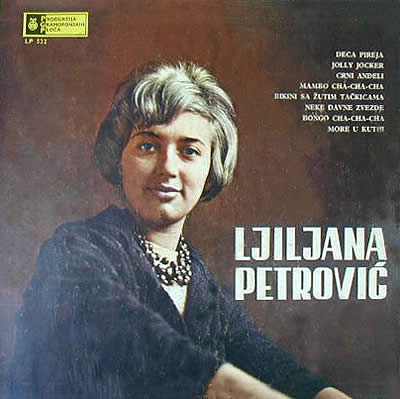
ZAISTA NEŠTO INTERESANTNO NA TIM BUVLJACIMA, CEDEI KOJE NEKO BACI SA DELIMA NAŠIH NJABOLJIH KOMPOZITORA, OVO JE STVARNO HOROR.
Dakle na ovoj kolekciji Udruženja kompozitora mogu se nači dela MARKA TAJČEVIĆA, jednog od malog broja najvećih kompozitora i pedagoga JUGOSLAVIJE. Dakle ovde je upitanju jedan presek njegovih dela i izvedbi moćnih orkestara i poznatog dirigenta sve to snimljeno 1984. godine, dakle snimci za naš blog o zvucima JUGE.
Born in Osijek, Croatia (then Austro-Hungarian Empire) on January 29, 1900, his music education began with violin studies at the Croatian Music Institution (Hrvatski glazbeni zavod) at the time the First World War broke out in Europe with Blagoje Bersa, Franjo Dugan and Fran Lhotka in Zagreb. In 1920 he went to Prague for further music studies where studied composition with Vaclav Stepan. Prague, an important cultural center, made a big impact on young Tajcevic. Unfortunately, because of his poor financial situation, he was forced to leave Prague after a year. For a short period of time, Vienna seemed like a good place where Tajcevic could continue his music studies. After spending some time in Vienna, where he took lessons with Joseph Marx and Max Springer, he returned to his country to complete his studies.
In Zagreb together with three other composers (Z. Grgoševic, J. Gotovac, and A. Novak) Tajcevic prepared a concert in the series “Naša pucka lirika” (Our Folklore), which started in 1923. For this concert each of the composers wrote new songs for voice and piano based on folk music. Tajcevic composed six songs for this occasion and the performance of one of them was so successful that the audience asked for encores four times during that same evening. This was a great accomplishment for young Tajcevic.
During the period 1924-40, Tajcevic worked in Zagreb as a teacher. Teaching was Tajcevic’s life career, intermingled with composing, conducting, and writing articles and music critiques. With other colleagues from Zagreb, he helped form the Lisinski Music School. Apart from teaching in school and composing, Tajcevic was very active as a choral conductor, leading numerous choirs including “Balkan”, “Srpsko pevacko društvo”, and “Sloga” before moving to Belgrade in 1940, where he continued his conducting activity. His last concert as a choir conductor was in 1945 with the Central Choir of Belgrade, which had just been freed from the Germans. Moving to Belgrade did not stop Tajcevic in his teaching career, for in 1945 he became a professor of theory and composition at the Belgrade Academy of Music, later renamed Faculty of Music Arts (Fakultet muzicke umetnosti). Tajcevic wrote music critiques from 1922 (while he was still in Zagreb), until 1955. They were published in magazines and newspapers such as Obzor, Rijec, Pokret, Vijenac, Jutarnji list, Zvuk, and Politika. After a considerably long and productive life Marko Tajcevic died and was buried in Belgrade in 1984.
Tajcevic’s complete output totals fifty-four compositions, comprising works for solo voice, choir, chamber orchestra, strings, woodwinds, and piano. He also published books on theory and harmony. His book Osnovna teorija muzike (The Elements of Music Theory) has been extensively used in music schools in the former Yugoslavia. Tajcevic’s output is not large, but it is well crafted. He liked to work slowly and was aware of the responsibilities of signing the completed work. The authentic style of Tajcevic is expressed through small forms—mostly miniatures, solo songs, and similar short pieces. For many critics, he was a “superb master of the miniature”. Once he mentioned that he was amazed by the power and depth of some miniatures such as Chopin’s Prelude in C minor, Op. 28 No. 20, or Bach’s minuets. This type of piece was probably an important inspiration for his own compositions.
Piano works were the main compositional focus of Tajcevic before the Second World War. After the war he began composing more often for strings, recalling his first musical steps with violin as his instrument. He wrote six works for strings, four of them titled divertimentos for three violins or string orchestra. Chaconne is his only piece for violin solo, and his only work for a wind instrument is Prelidijum i igra (Prelude and Dance) for flute solo. Vocal pieces (solo and choir) occupied his creativity throughout his life. He wrote songs for solo voice with piano and for female, male, children’s, and mixed choruses. His last piece is Zagorska rapsodija from 1979 for mixed choir.
Tajcevic's works are not only recognized in Yugoslavia, but also internationally. Articles about him have appeared in dictionaries and encyclopedias such as the New Grove Dictionary of Music and Musicians, Enciclopedia Salvat de la Musica, and Die Musik in Geschichte und Gegenwart. Some of his piano pieces—Sedam balkanskih igara (Seven Balkan Dances), Medjimurske (Songs from Mur Island), Srpske igre (Serbian Dances), and Prva svita (The First Suite)—were published in Yugoslavia (Prosveta, Frajt, Hrvatski glazbeni zavod) as well as in Germany (Henle Musikverlag, Schott, Hans Gerig Musikverlag), the former Soviet Union (Musgiz), and the United States (Rongwen Music, Inc., Warner Brothers, Broude Brothers, Ltd.). Some famous pianists—such as Rubinstein, Friedmann, Borovski, and Orlov—have included Seven Balkan Dances in their repertoire.













No comments:
Post a Comment